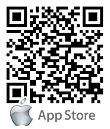FAQs
FAQ Subject
There are two different standards:
1) Homeplug 1.0/1.0 Turbo for 14Mbps and 85Mbps (PL-104 and PL-420)
2) Homeplug AV for 200Mbps, 500Mbps and 1G (PL-751)
It should work with the same HomePlug AV device. It can co-exist with HomePlug 1.0 or HomePlug 1.0 Turbo (PL-104 or PL-420 in the same domain), but cannot connect with PL-104 and PL-420 (Homeplug 1.0).
| Homeplug 1.0/1.0 Turbo | Homeplug AV | Homeplug AV |
Standard | 1.0/1.0Turbo | IEEE802.3; IEEE802.3u | IEEE802.3; IEEE802.3u |
Max. Speed | 14Mbps/85Mbps | 200Mbps | 500Mbps |
Co-existence | Yes | Yes | Yes |
Connection |
|
|
|
Homeplug 1.0 | Yes | No | No |
Homeplug AV | No | Yes | Yes |
Pick a plug is a technology that allows you to determine how fast your Powerline connection is -- simply by looking at a multi-color LED on the front of the device. Green is the fastest possible connection. Orange indicates a less than optimal connection. Red indicates that you might experience poor performance and should consider moving one of the devices to a different outlet.
Wi-Fi Protected Setup (WPS) is the simplest way to build connection between wireless network clients and the router, and there are two types of WPS: Push-Button Configuration (PBC), and PIN code.
You don't have to select encryption mode and input a long encryption pass phrase every time when you need to setup a wireless client, you only have to press a button on wireless network client and the router, and then WPS will do the setup for you.
A:There are two different standards:
1) Homeplug 1.0/1.0 Turbo for 14Mbps & 85Mbps, such as PL-104 and PL-420
2) Homeplug AV for 200Mbps, 500Mbps, and 1G, such as PL-702
It should work with the same HomePlug AV device which is another PL-702.
It could co-existence with HomePlug 1.0 or HomePlug 1.0 Turbo such as PL-104 or PL-420 in the same domain, but cannot connect with PL-104 and PL-420 (Homeplug 1.0)

No, you can't. The ADN-4000v2 equips with two dipped antennas inside the device.
802.11n is a draft high-speed wireless standard. In addition to throughput, 802.11n will significantly enhance the reliability and range of existing 802.11 networks.
The standard defines procedures by which throughputs greater than 100Mbps and significant range improvements also are possible. Some of the important features that are included in current 802.11n draft are multiple-input multiple-output (MIMO), channel bonding and packet aggregation.
The MIMO technology uses several antennas to move multiple data streams from one place to another. Instead of sending and receiving a single stream of data, MIMO can simultaneously transmit three streams of data and receive two. This allows more data to be transmitted in the same period of time.
The IEEE 802.11n not only extends the range, or the distance over which data can be transmitted, but also increases the amount of data that can be transmitted.
By default configuration of Planet wireless products, the wireless security is disabled. If you would like to make your network environment stay is safe and secure, there are four ways as following can help you to secure your network environment.
1.SSID: Disable SSID, and other wireless network client wont able to search
your wireless AP or router, but this way is not the best for wireless security.
2.WEP key: this is the original wireless encryption, it provides 64/128-bits
encryption key, so you can follow your demand to setup this function.
After finished setup, you will need to type the same WEP key on your
wireless network client, so the client can connect to router.
3.WPA-PSK/WPA-PSK2: this encryption is more secure than WEP key,
you need to type 8-63 ASCII characters or 64 hexadecimal characters as
the "Pre-Shared Key".
After finished setup, you will need to type the same WEP key on your
wireless network client,so the client can connect to router.
4.Wireless MAC Filter: You can fill in the MAC address of your wireless
client,and select "deny" or "allow" to control your wireless network.


